The sinking of Joshimath has once again turned the spotlight on the policy versus science debate. Researchers privy to the blatant abuse of Maharashtra’s hills and coast say it’s time the state government wakes up to the destruction taking place under their nose
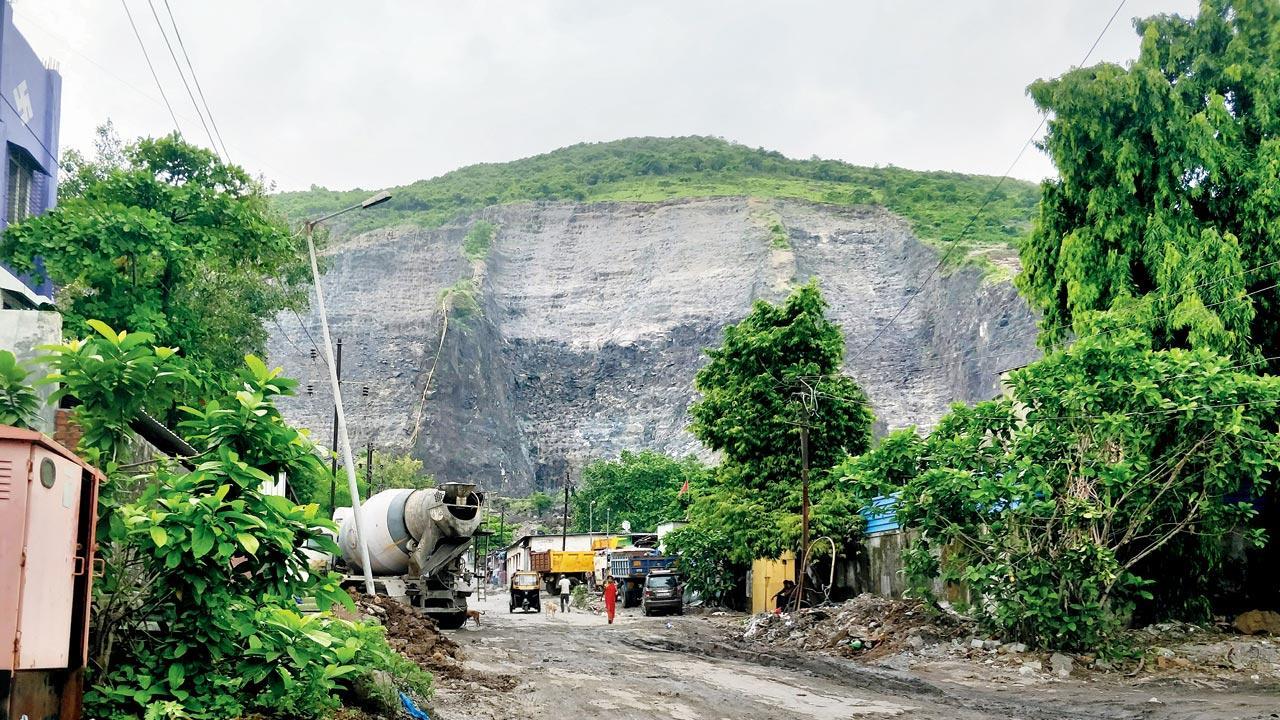
Parsik Hill in Navi Mumbai has been interfered with on several occasions in the past. Quarrying was banned here five years ago. While vetting a proposed landscaping project there, the IIT Bombay had recently concluded that “a significant part of the undeveloped slope is found to unstable and does not meet the Indian Standard Code of building in hills”. Pic Courtesy/NatConnect Foundation
Scientists and policymakers make for strange bedfellows.
The land subsidence in Uttarakhand’s hill town Joshimath, which has forced hundreds of residents to evacuate in the last two weeks, only reminds us why. An article published in a national daily pointed out that two different expert scientific committees, one in 1976 and another in 2021, had raised red flags, warning against heavy construction work, felling of trees and rampant agricultural activity on the slopes of the town. In fact, the 2021 panel of geologists had even recommended urgent slope stabilisation and evacuation, but no action was taken. That men of science are being consistently ignored and sometimes even silenced, became evident when the National Disaster Management Authority (NDMA) last week directed organisations against releasing data related to Joshimath on social media platforms or interacting with the media. The direction came after the Indian Space Research Organisation (ISRO) had in a report stated that the town had sunk 5.4 cm between December 27 and January 8. ISRO later withdrew the report and related satellite images from its website. Scientists and conservationists are not surprised by this U-turn.
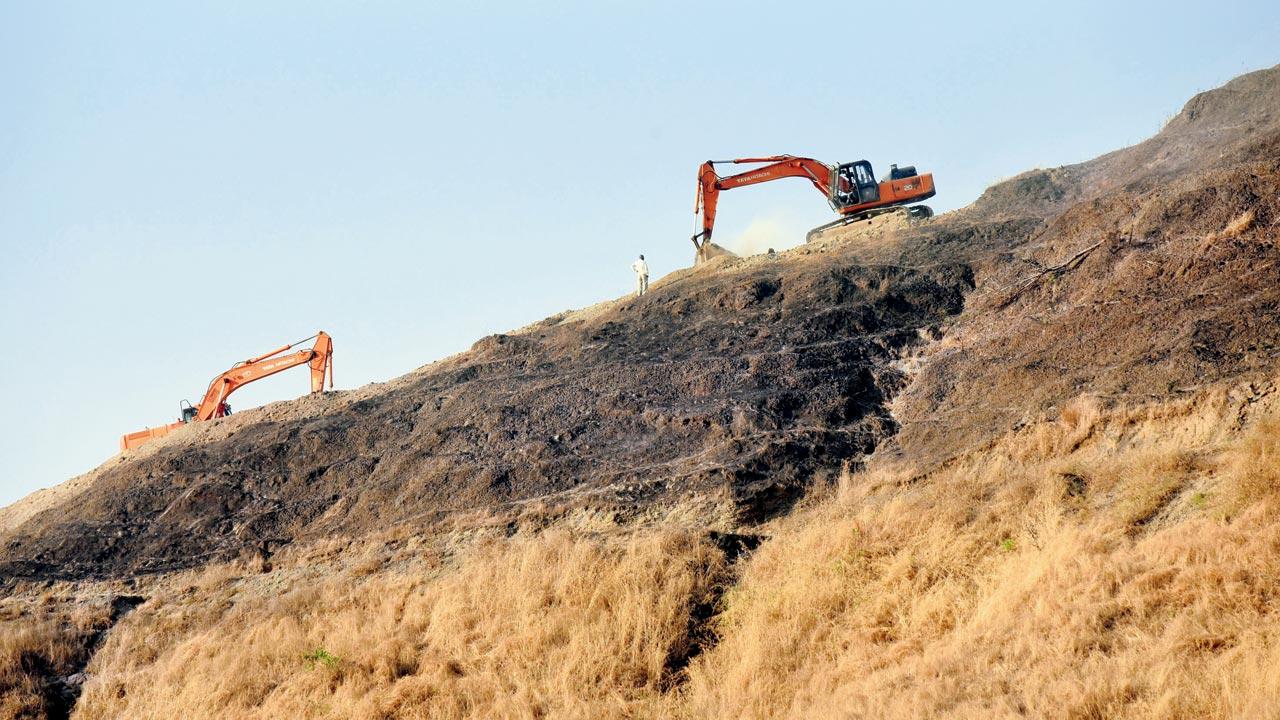
Environmentalist BN Kumar, director of the NGO NatConnect Foundation, fears that Mumbai and its neighbouring cities will be impacted just as severely as Joshimath if local corporations and developmental bodies continue to disregard warnings by researchers.
In 2021, BMC data revealed that Mumbai had 291 landslide-prone spots, 152 of which were in Bhandup. The neighbourhood of Navi Mumbai, where Kumar has been actively pursuing the protection of Kharghar and Parsik Hills, faces a similar threat.
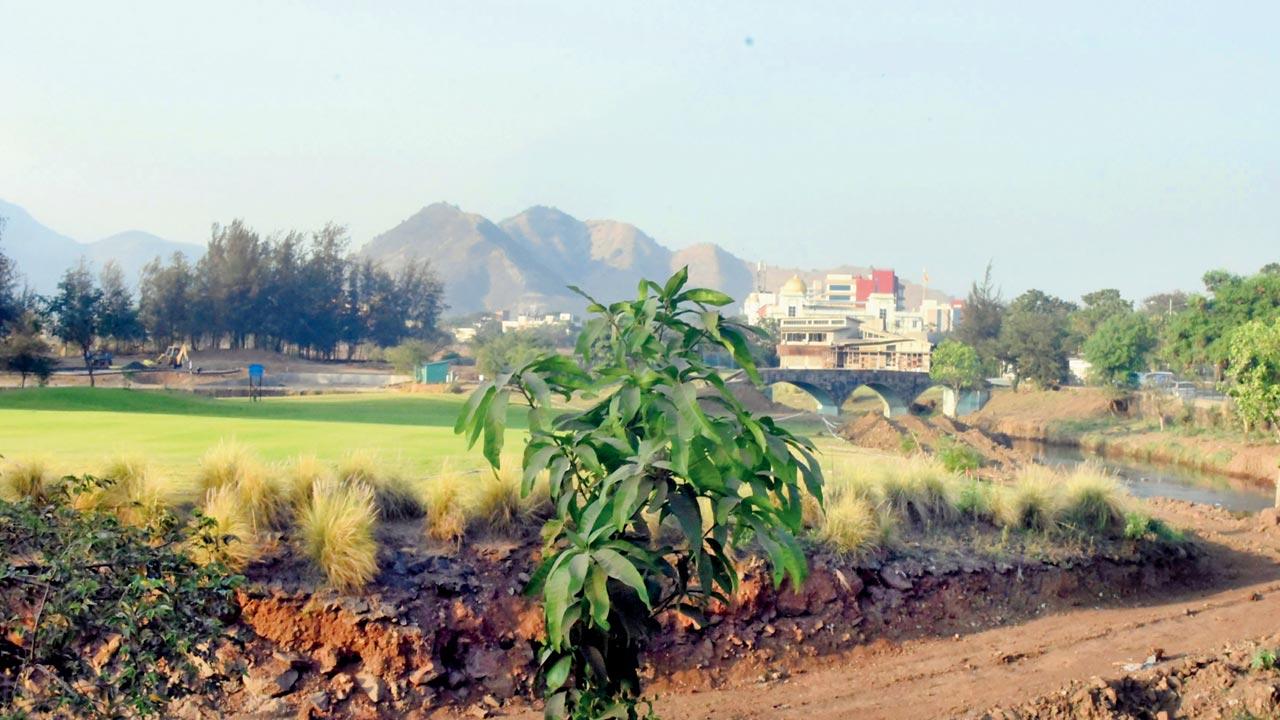 Digging underway at a small hillock in Kharghar Hills in Navi Mumbai, barely a few metres away from the tribal settlement of Dhamole village, allegedly for the expansion of the existing golf course nearby. Pic/Sameer Markande
Digging underway at a small hillock in Kharghar Hills in Navi Mumbai, barely a few metres away from the tribal settlement of Dhamole village, allegedly for the expansion of the existing golf course nearby. Pic/Sameer Markande
Parsik Hills’ vulnerability, in particular, stands out like a sore thumb, in light of IIT Bombay’s Department of Civil Engineering report dated December 26, 2022. While vetting a proposed landscaping project there, the institute had concluded that “a significant part of the undeveloped slope is found to unstable and does not meet the Indian Standard Code of building in hills”.
The Parsik stretch has been interfered with on several occasions in the past. The forest department, says Kumar, had handed over 138.07 hectares here to the City and Industrial Development Corporation (CIDCO) for quarrying and resettling project-affected people for land taken over 50 years ago for development of Navi Mumbai. The lease will expire in 2026. But, in a glaring violation, it was learnt that over 264.1 hectares of the hill had already been excavated. The National Green Tribunal (NGT) intervened, and stopped all quarrying around five years ago, following a PIL. Later, the Navi Mumbai Municipal Corporation, in its Environment Status Report for 2018-19, proposed to rejuvenate the quarried hill portions with the help of The Energy and Resources Institute (TERI). Despite this, there was recent construction on a ready mix concrete (RMC) plant at a quarry on Parsik Hill. “It was stopped by the Forest Department following a complaint by us. No other activity was allowed in the hill area which is under the Forest Department.”
 BN Kumar, Jyoti Nadkarni and Krishna Achutarao
BN Kumar, Jyoti Nadkarni and Krishna Achutarao
The IIT study was a result of the digging activity for a landscaping project by a private developer, in the residential part of the hill. “Digging began there in 2021,” says Kumar, adding that the IIT study was carried out a year later. “The study was clearly an afterthought. The damage had already been done with heavy machinery that was not supposed to be used as per a Leave and License agreement between CIDCO and the builder.” “Are authorities even considering the fragility of the slope, especially with the recent report by the IIT?” Kumar asks.
A landslide, he fears, could put settlements on the hill and even below it at risk. In fact, in July 2022 there was a landslide along the slope hitting the compound wall of the SCADA centre of NMMC’s water supply department, Vishnu Joshi of Parsik Greens Forum points out.
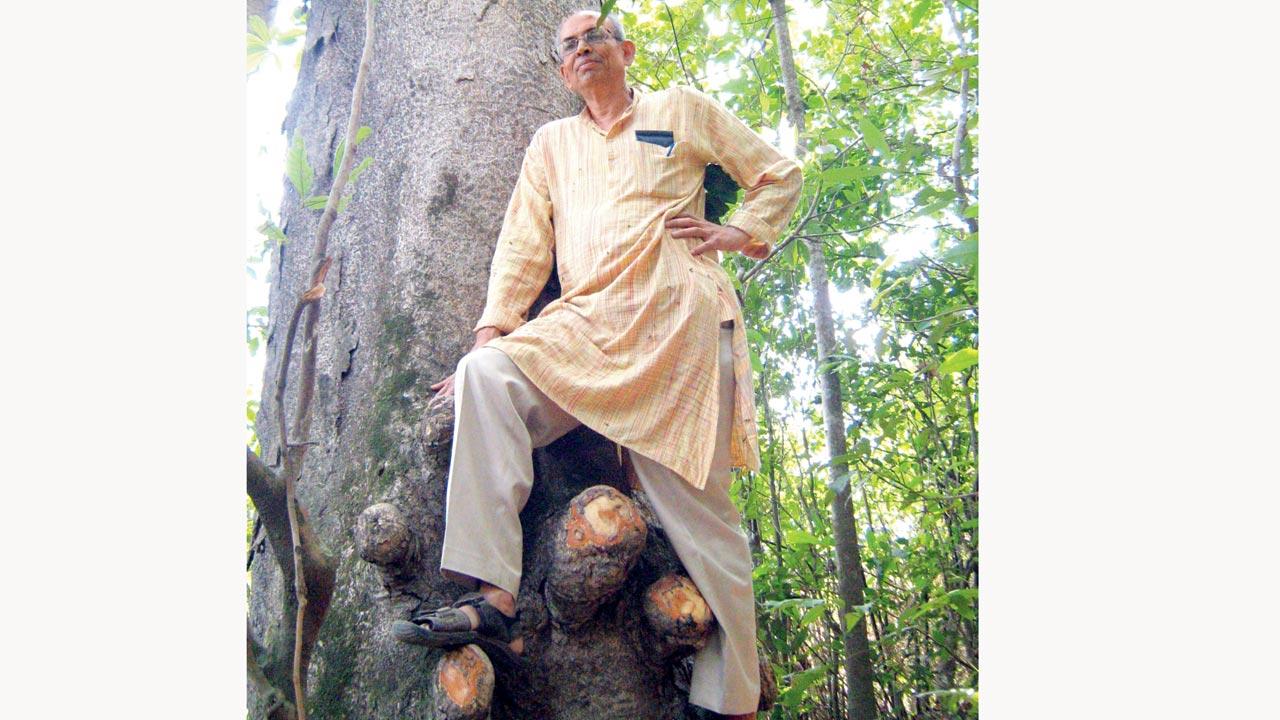 Veteran ecologist Madhav Gadgil who faced severe backlash for being pro-nature, when he released his 2011 report on the Western Ghats, continues to fight for its protection
Veteran ecologist Madhav Gadgil who faced severe backlash for being pro-nature, when he released his 2011 report on the Western Ghats, continues to fight for its protection
Kumar says that a huge unuathorised slum colony has also come up on the Parsik Hill slope, just behind the Navi Mumbai Police Commissioner’s bungalow. “These slums could also be in danger in the event of a landslide. But in this era of vote bank politics, who cares?” Kumar adds.
Kharghar Hills, which measures 200 hectares, boasts of deep and shallow valleys, and is a biodiversity hotspot, according to a Bombay Natural History Society (BNHS) study. Kumar says that in the last few years, it has also witnessed rampant abuse. Last year, NatConnect had opposed CIDCO’s plan to exploit the Kharghar Hill Plateau (KHP) for real estate development on 106.05 hectares, which, Kumar says, is equivalent to the size of 10 Azad Maidans.
 Dr Anjal Prakash, Bharti Institute of Public Policy
Dr Anjal Prakash, Bharti Institute of Public Policy
When this writer visited the foothills near Dhamole village, abutting the Kharghar Valley Golf Course, quarrying work was underway on a hill on the opposite side, allegedly for expansion of the golf course. “This hill was used by villagers to graze their cattle. They can no longer access it,” says conservationist Jyoti Nadkarni, adding that there was a pond below the hill, which has now been covered, to carry out the construction activity. The tribal villagers had opposed the digging of the hill in April last year, but nothing came of it. “Once you destroy the hills, you cannot undo the damage,” warns Nadkarni.
Kumar says that he has already informed the state environment department about the hill cutting, and was told that no environmental clearance was given for the same. CM Eknath Shinde on Wednesday also urged UD-1 principal secretary Bhushan Gagrani to look into the issue. “We have done our bit to draw the attention of the top state functionary. We shall keep following up through the RTI route to get information on the status of the complaint,” says Kumar, who post the Joshimath incident, wrote to Prime Minister Narendra Modi, President Droupadi Murmu, and Chief Minister Eknath Shinde, demanding setting up of a Central Hill Regulation Authority. “Most coastal states [Maharashtra included] have central and state coastal zones; some states even have river regulatory zones to prevent development on the banks. Our forests are protected by the forest department. But, the hills seems to be nobody’s property. Part of the hills are owned by the forest or revenue departments or planning agencies like the CIDCO... when we file a complaint, nobody wants to take onus. We need a central authority to protect our hills and the settlements around them.”
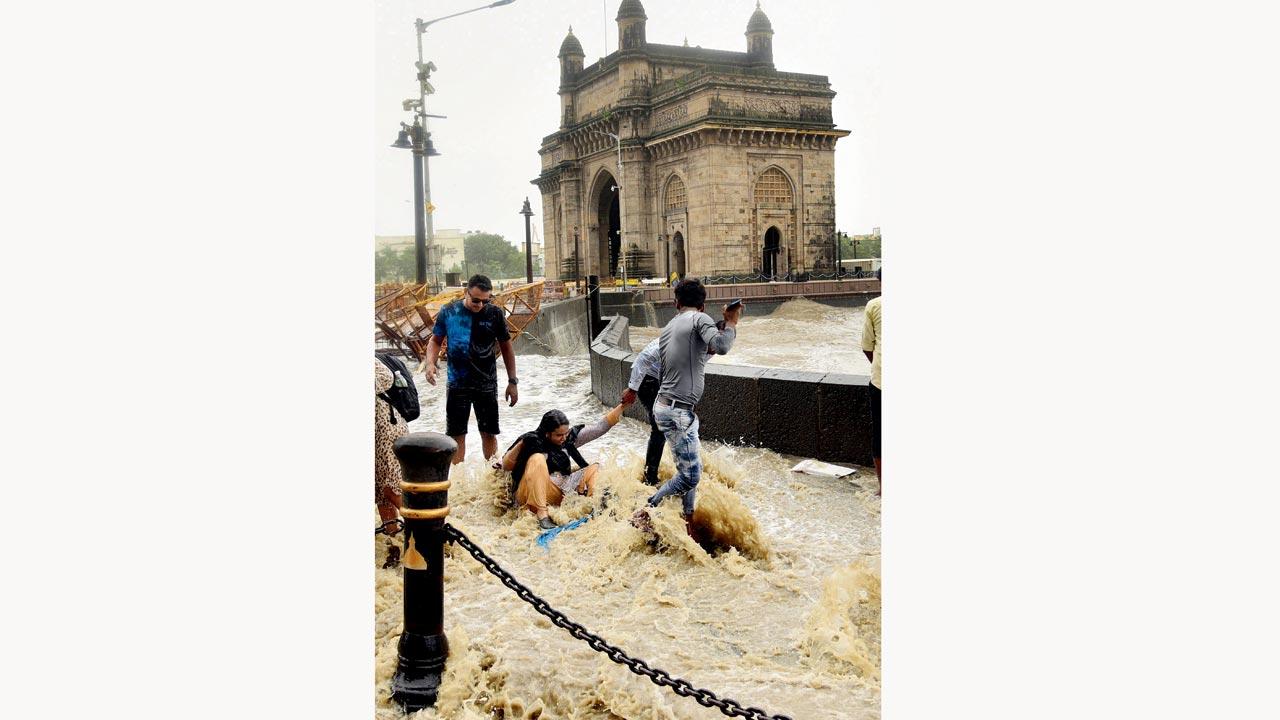 In 2021, NASA, based on an IPCC report, had identified 12 coastal Indian cities, including Mumbai, that would find themselves submerged under three feet of water by the turn of this century
In 2021, NASA, based on an IPCC report, had identified 12 coastal Indian cities, including Mumbai, that would find themselves submerged under three feet of water by the turn of this century
Most researchers and environmentalists have been outrightly snubbed or given the cold-shoulder by government authorities.
Veteran ecologist Madhav Gadgil had it worse. He faced severe backlash for being pro-nature, when he released his report on the Western Ghats, nearly 12 years ago. The Western Ghats Ecology Expert Panel (WGEEP), also known as the Gadgil Commission, had been appointed by the Ministry of Environment and Forests of India. The report designated the entire Western Ghats as an Ecologically Sensitive Area (ESA) and assigned three levels of Ecological Sensitivity to different regions—Ecologically Sensitive Zone 1 (ESZ1), ESZ2 and ESZ3. In ESZ1 and ESZ2, the panel recommended an indefinite moratorium on new environmental clearances for mining and no new polluting (red and orange category) industries, including coal-based power plants. “I didn’t expect our report to be accepted. Because, unlike most government committees, we had very honestly recorded a whole series of observations, which revealed how an already corrupt system was being manipulated by vested interests operating on the Western Ghats,” Gadgil tells mid-day.
 Journalist Viju B at a hotel facing Cheruthoni river in Idukki. The river had flooded the township when the shutters of Cheruthoni dam were opened. “All the 48 rivers in Kerala flowing down from Western Ghats have been encroached and this is one of the major reasons why water flooded the towns in 2018 floods,” he says
Journalist Viju B at a hotel facing Cheruthoni river in Idukki. The river had flooded the township when the shutters of Cheruthoni dam were opened. “All the 48 rivers in Kerala flowing down from Western Ghats have been encroached and this is one of the major reasons why water flooded the towns in 2018 floods,” he says
Event at age 80, he remains curious about the ghats that stretch to a length of 1,490 km from Tapi Valley in the north to Kanyakumari in south, and span six states. Over the years, Gadgil has returned to the ghats, to learn more about their changing nature and how man-made interventions have left people and towns vulnerable.
In excerpts from his upcoming autobiography, which he shared with mid-day, Gadgil talks about travelling to Puthumala in Wayanad, Kerala, in 2019, witnessing first-hand the large-scale losses to life and property due to the floods. He even writes about the coastal town of Mahad in Raigad district of Maharashtra, which experienced heavy rains from June 19, 2021, culminating in severe floods. “Mahad had experienced floods in 2005 too, but 2021, it was different in many ways. The flood waters came in waves, with great velocity, and were higher by over three metres. Almost 45 cm of mud was deposited, while in 2005 it was only 1-2 cm. Besides, only fine sediment was carried by the flood water in 2005, while in 2021 it included sand and small pebbles,” he says, adding, “The severity may be related to the devastation of the mountain slopes by road construction, extensive quarrying and blasting of rocks in the watershed of the three rivers serving Mahad—the Kal, Gandhari, and Savitri. These disturbances have led to a number of landslides and formation of huge fissures along with land subsidence.”
His 2011 report was no different, as it highlighted violations by state governments, forest departments and local moneybags. “I believe that there should be no development or conservation by exclusion [of the locals],” he tells mid-day.
The Kasturiragan Committee report, which replaced Gadgil’s report, says environment journalist Viju B, was a diluted version. “It’s sad what happened to Gadgil’s report. All the governments in the six states, many backed by the mining lobby and powers that be, were against it. A false narrative was pedaled. The problem was with the messaging, and how the report was released.”
The Kochi-based author of the award-winning 2019 book, Flood and Fury: Ecological Devastation in the Western Ghats and a former mid-day reporter, says that one doesn’t need to fall back on science to know of the utter devastation taking place in the Western Ghats. His first exposure to the ghats was Sindhudurg in Western Maharashtra, when he was still working as a journalist in Mumbai. “Someone had tipped me off about a mining proposal in Sindhudurg, and how 48 mountains were going to be mined on the ghats. After the report appeared, the then Union environment minister Jairam Ramesh reviewed the decision, and put a stay on the proposal.” Eight years later, the August 2018 floods in Kerala gave him his second exposure. “The politicians said that it occurred due to intensive rainfall and delay in opening of the shutters of the dam. But, when I travelled across the region, I realised destruction taking place on the Western Ghats had only exacerbated the problem. All the flooding had occurred on the banks of the river, and because these banks were encroached, the river didn’t have path to flow. The landslides, on the other hand, were a result of quarrying.” The very fact that Kerala has continued to experience floods every year since, he says, indicates that this is not once-in-a-century natural disaster as claimed
by many.
Despite scientists urging state governments to treat the Western Ghats with care, development projects continue to be announced and planned. Last month CM Shinde said that Bhandara, Gondia, Gadchiroli, Raigad, Ratnagiri and Sindhudurg districts, which are a haven for natural resources, should be exploited by the mining industry. “There was a moratorium [on mining] in Sindhudurg; I hope that’s not lifted,” says Viju.
Gadgil, who remains undeterred in his fight to protect the ghats, says, everything in nature is connected. “The water and energy that Mumbai uses today and very lavishly, has led to destruction of huge natural areas [including in the ghats]. But the citizens are unaware of this. In the near future, Mumbai will be in serious trouble.”
Krishna AchutaRao is professor, Centre for Atmospheric Sciences and Faculty Associate, School of Public Policy, IIT Delhi. He is one of the 230 scientists from across the world, who contributed to the Sixth Assessment Report (AR6) of the Intergovernmental Panel on Climate Change (IPCC) released in 2021. Among the more startling revelations in the report, which urged capping of global warming to 1.5 degrees Celsius in the coming decades, was that the Indian Ocean was seeing the fastest rate of warming and sea level rise globally, which would result in coastal flooding. US-based space agency NASA, which had used the IPCC report to analyse sea level changes, identified 12 coastal Indian cities that would find themselves submerged under three feet of water by the turn of this century. Among them was Mumbai.
“Even if you stop emitting new greenhouse gases, sea levels will continue to rise for a few decades. So, it’s a slow moving threat,” AchutaRao tells mid-day. “But, when you talk about our coastlines, the rising sea level is not the only problem. The ocean gets warmer due to climate change, which creates conditions for cyclones. This is particularly critical for coastlines in the tropics, where India is. Tropical cyclones form in warm waters, move over ocean, and create havoc when they encounter land. The high wind speeds and heavy rainfall—coupled with sea level rise—will lead to a massive pileup of water pushing inland, uprooting trees, destroying infrastructure and lives, and inundating larger areas.” Not just cyclones, climate change will also make coastal cities vulnerable to heavier rainfall: “As temperatures rise, the air will be able to hold more water. Higher water vapour in the air means a heavier downpour. Mumbai, and every other coastal town in India, is going to experience higher amounts of flooding in the future... and by some accounts, the impact is already being seen.”
According to Dr Anjal Prakash, research director, Bharti Institute of Public Policy, ISB, and lead author IPCC, a report by the Indian Institute of Tropical Meteorology has revealed that the number, intensity and severity of cyclones in the western corridors have increased manifold, and Mumbai is at risk.
One would imagine that these findings would push the government to act, and immediately. The Uddhav Thackeray-led government’s Mumbai Climate Action Plan (MCAP) 2022, which dipped into these projections to launch an action plan, seemed like a step in the right direction. “You can adapt to climate change and make policy that will prevent people from its impact,” says AchutaRao. “But in India, unfortunately, policy makers haven’t paid enough attention to the IPCC. I don’t know why. It’s not for lack of trying... but there has been a deathly silence and that’s worrying.”
Dr Prakash says it as it is. “The major problem is that today’s development is not driven by science. Joshimath is a wake-up call for everyone. Our public policy needs to be informed by the latest science.” He says that most of the present infrastructure projects are driven by “huge rent-seeking [practice of manipulating public policy]” spearheaded by politicians. “The projects run into thousands of crores and feed back into the political system.”
While AchutaRao admits that the job of policymakers is to take tough decisions in the face of uncertainty, for this, they first need to understand what is certain and not. “When you are making policies for preventing impending hazard, you need to judge based on an assessment of how well we know this information. For this, policy has to ask the right questions, and so does science; they have to have a dialogue—like how can we enhance our understanding of a situation or reduce the uncertainty around? It’s a negotiation, but if you don’t have a process at all, where you are systematically getting scientific input, then it’s hard to come up with a report and expect government action. In India, there is no concerted effort to ensure that scientific knowledge is feeding into policy making.”
 Subscribe today by clicking the link and stay updated with the latest news!" Click here!
Subscribe today by clicking the link and stay updated with the latest news!" Click here!










